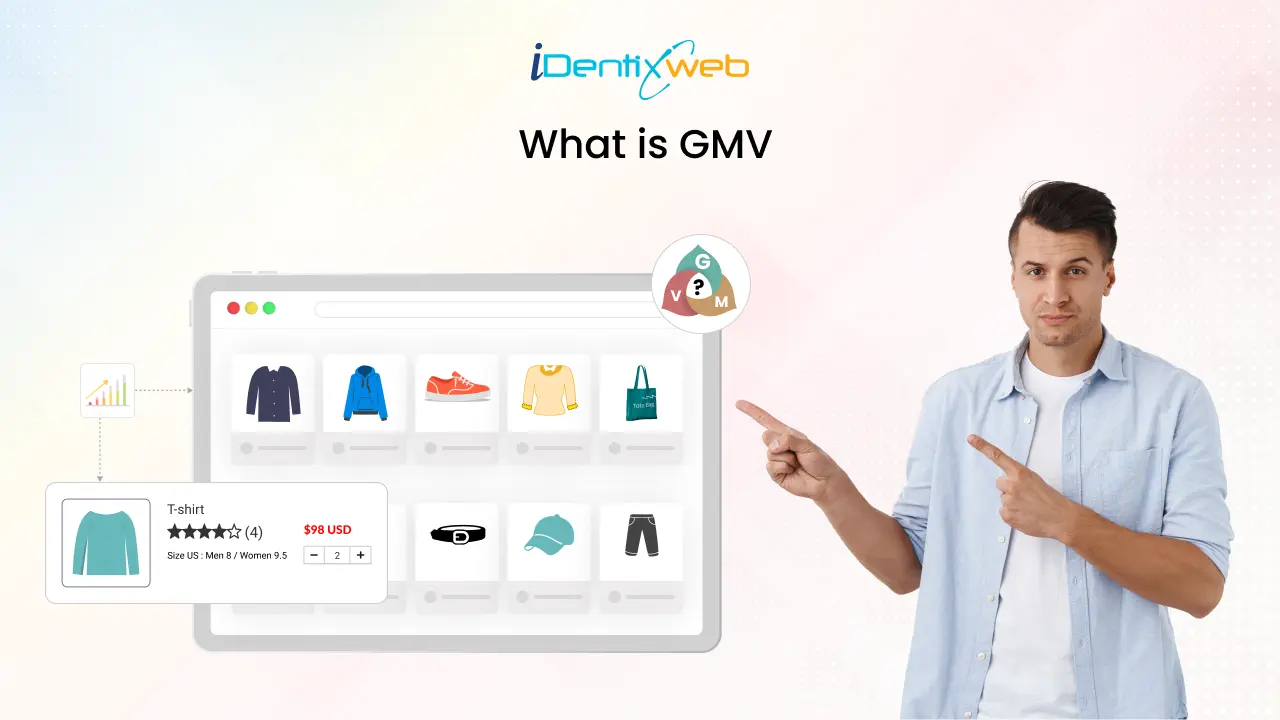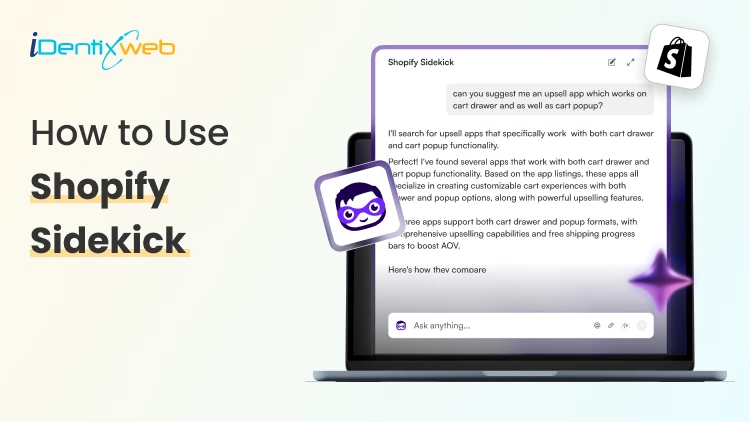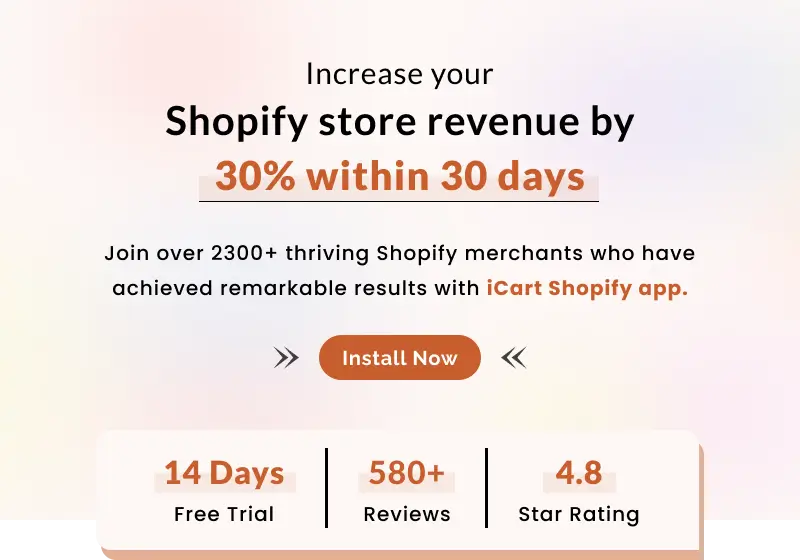
If you run an online store, tracking metrics is required to understand your business performance. One of the most challenging metrics in ecommerce is GMV. But what is GMV, and why does it matter?
This guide will explain the definition of GMV, its importance, how to calculate it, and how it impacts your online business. We will also discuss strategies to grow GMV effectively while maintaining profitability.
What is GMV?
GMV (Gross Merchandise Value) refers to the total sales value of products sold on an ecommerce platform over a specific period. It represents the overall transaction volume before subtracting costs like discounts, shipping fees, and returns.
Many platforms, including Shopify, Amazon, and eBay, assess business growth. GMV, measure business growth and sales trends using this metric. However, GMV does not account for operating expenses or profit margins, making it essential to analyze alongside other financial indicators.
GMV Formula and Calculation
The basic formula for calculating GMV is:
GMV = Total Units Sold × Selling Price per Unit
For example, if an online store sells 500 products at an average price of $50, the GMV would be:
500 × $50 = $25,000 GMV
This calculation helps businesses track total revenue generated before considering deductions like costs and fees.
Why is GMV Important in E-commerce?
Here’s why GMV is essential and how it impacts ecommerce businesses:
Measures Business Growth
GMV helps businesses track their total sales volume over time. By monitoring GMV trends, ecommerce brands can assess whether their business is growing, stagnating, or declining.
Example:
An online clothing store generated a GMV of $100,000 in its first quarter, which increased to $150,000 in the second quarter. This rise in GMV suggests business growth, indicating increased customer demand and sales.
Helps Compare Sales Performance
Tracking GMV across different periods allows businesses to identify sales patterns and seasonal trends. By analyzing GMV data, ecommerce owners can make data-driven inventory, marketing, and promotions decisions.
Example:
A Shopify store selling electronics noticed that its GMV in November and December was 40% higher than in other months. This indicates a seasonal boost during Black Friday and holiday sales. By recognizing this pattern, the business can prepare by stocking up on popular products and launching targeted promotions.
Attracts Investors and Stakeholders
Investors and business partners often consider GMV an indicator of market demand and business potential. A high GMV suggests substantial sales volume, making the company more appealing for investment and partnership opportunities.
Example:
A growing ecommerce startup reports an annual GMV of $5 million, which attracts venture capitalists looking to invest in high-growth companies. While investors will also consider profit margins and operating costs, a high GMV indicates strong consumer interest and business scalability.
Limitations of GMV
While GMV is a valuable metric, it has its limitations:
- Does Not Reflect Profitability: GMV accounts for total sales but does not consider production, shipping, or marketing expenses
- Ignores Returns and Cancellations: GMV calculations typically do not adjust for returned or canceled orders, potentially inflating perceived performance.
- Lacks Insight into Customer Behavior: GMV alone does not provide customer satisfaction, repeat purchase rates, or average order value information.
How to Increase Gross GMV and Strategies with Real-World Examples
Effective, real-world strategies to increase GMV while maintaining strong profit margins.
Increase Average Order Value (AOV)
Increasing the Average Order Value is one of the most effective ways to grow GMV without acquiring new customers. Below are proven strategies to achieve this, with real-world examples.
Upselling & Cross-Selling
Upselling and cross-selling are potent techniques that persuade customers to add more value to their purchases.
What’s the Difference?
- Upselling: Encourages customers to buy a higher-priced version of the product they are considering.
- Cross-selling: Recommends complementary products that enhance the primary purchase.
Example: Amazon’s “Frequently Bought Together” Feature
When customers add a laptop to their cart, Amazon suggests accessories like a mouse, laptop stand, and keyboard. This nudges customers to purchase additional items, increasing the total order value and boosting GMV.
Product Bundling
Product bundling is another excellent way to increase AOV by offering multiple related products at a slightly discounted rate. This strategy works because customers perceive bundled products as a better deal than purchasing items individually.
Example: Nike’s “Bundle & Save” Promotion
Nike effectively uses product bundling by offering discounts when customers buy two or more products. For example, a promotion like “Buy two pairs of sneakers and get 20% off” encourages customers to add more items to their cart, increasing the total transaction value and driving up GMV.
Volume Discounts & Bulk Pricing
Offering discounts for larger purchases incentivizes customers to buy more in a single order. This works particularly well for consumable products like groceries, skincare, and office supplies.
Example: Costco’s Bulk Purchase Model
Retail giant Costco thrives on bulk pricing, offering customers significant savings when they purchase in larger quantities. A customer buying a 12-pack of paper towels instead of a single roll gets a lower price per unit while increasing the overall order value.
Improve Customer Retention & Loyalty Programs
Keeping existing customers is cheaper and more profitable than finding new ones. Loyal customers spend 67% more, making customer retention a key strategy for increasing GMV.
Launch a Loyalty Program
Reward customers with points, discounts, or exclusive perks to keep them returning.
Example: Starbucks Rewards – Customers earn stars for purchases and redeem them for free drinks, increasing repeat orders and spending.
Offer Subscription Services
Subscriptions create steady, recurring revenue and encourage frequent purchases.
Example: Amazon Prime – Members get free shipping & exclusive deals, leading to 4x more spending than non-members.
Use Personalized Email & SMS Marketing
Send tailored product recommendations and special offers to re-engage past customers.
Example: Sephora – Suggests products based on past purchases, increasing repeat sales.
Optimize Pricing Strategies
Innovative pricing isn't just about lowering prices, it’s about strategically setting prices to drive higher sales and more oversized orders without sacrificing profit margins. A well-planned pricing strategy can increase order volume and average order value (AOV), leading to GMV growth.
Use Tiered Pricing
Encourage customers to buy more by offering discounts for bulk purchases. This increases sales per order and creates a sense of value for the buyer.
Example: Wholesale Pricing on Shopify
Many Shopify sellers use tiered pricing to incentivize larger purchases:
- Buy 1 = $10
- Buy 3+ = $9 each
- Buy 5+ = $8 each
Implement Limited-Time Offers
Scarcity and urgency are powerful psychological triggers that motivate customers to make faster buying decisions and spend more. Flash sales, countdown timers, and seasonal discounts can create excitement and drive large sales spikes.
Example: Black Friday & Cyber Monday Sales
During BFCM, e-commerce stores offer time-sensitive discounts, leading to massive sales surges in a short period. Customers rush to grab deals, often buying more than they originally planned.
Leverage Dynamic Pricing
Adjust prices based on demand, competitor pricing, or customer behavior. This helps businesses stay competitive while maximizing profit margins.
Example: Airline Ticket Pricing
Ever noticed how flight prices change frequently? Airlines use dynamic pricing to adjust fares based on demand. E-commerce businesses can apply the same strategy to maximize GMV.
Enhance the Customer Shopping Experience
A smooth shopping experience increases sales, order value, and customer loyalty. When buying is easy and enjoyable, customers spend more and return often.
Improve Website Speed & Navigation
A slow or confusing website drives customers away. Ensure fast loading times and straightforward navigation for higher conversions and more oversized orders.
Example: Zappos
- Fast, smooth browsing.
- Easy navigation to find products quickly.
- Hassle-free returns & 24/7 support = more repeat buyers.
Simplify Checkout
A complicated checkout is one of the leading causes of cart abandonment. A user-friendly checkout can significantly improve conversions. Key optimizations include:
- Guest checkout
- Multiple payment options
- Auto-fill for faster transactions
Example: Apple Pay
One-tap checkout reduces friction & boosts completed purchases.
Optimize for Mobile Shopping
Most shoppers use their phones! A mobile-friendly site means higher sales and engagement.
Example: Shopify Stores
- Responsive design = better user experience.
- Mobile-first stores see higher order values.
Optimize Checkout & Reduce Cart Abandonment
Nearly 70% of shoppers abandon their carts due to friction at checkout. A smoother process means higher conversions and more sales. Here’s how you can optimize the checkout experience and reduce cart abandonment:
Offer Multiple Payment Options
Customers prefer flexibility. Accept credit/debit cards, PayPal, Apple Pay, Google Pay, and BNPL to reduce friction.
Example: Shopify’s One-Click Checkout (Shop Pay)
Shopify’s Shop Pay simplifies checkout, allowing returning customers to complete purchases 1.72x faster than traditional checkouts. The convenience of saved payment details and quick processing helps boost conversion rates.
Simplify the Checkout Process
A long or complex checkout process can frustrate customers and lead to abandoned carts. The easier the checkout, the higher the chances of completing the sale.
Example: Amazon’s One-Click Ordering
Amazon revolutionized online shopping by eliminating unnecessary steps. With One-Click Ordering, customers can purchase instantly, reducing friction and significantly boosting conversion rates.
Be Transparent About Pricing
Unexpected costs, especially hidden shipping fees, taxes, or extra charges, cause 48% of cart abandonments. Customers want clarity and transparency in pricing before they reach checkout.
Example: Zappos' Free Shipping & Returns
Zappos provides free shipping and easy returns, eliminating surprises at checkout. This transparency builds trust and encourages more customers to complete their purchases.
Wrapping Up
Understanding GMV and how it affects your ecommerce business is crucial for growth. While GMV measures total sales, it should be analyzed alongside profitability and operational costs to provide a complete financial picture.
By focusing on profitable sales strategies, such as increasing AOV, expanding product lines, and optimizing pricing, businesses can grow GMV sustainably and maximize revenue.
Would you like to explore more strategies for increasing your Total GMV, especially for Shopify? Let us know in the comments!
FAQs
1. What is GMV in simple terms?
GMV (Gross Merchandise Value) is the total sales value of all products sold on an eCommerce platform before deducting expenses like shipping costs and transaction fees.
2. How is GMV different from revenue?
GMV represents total sales before deductions, while revenue is the money a business earns after subtracting costs like discounts, refunds, and fees.
3. Does Shopify track GMV?
Yes, Shopify GMV is a key metric Shopify tracks for merchants. It helps businesses analyze the total sales volume on the platform.
4. How can I increase my Shopify total GMV?
To grow GMV, focus on upselling, bundling products, offering discounts, expanding product lines, and improving customer retention.
5. Why is GMV significant for ecommerce businesses?
GMV helps businesses track growth, measure sales trends, and compare performance over time. However, it should be analyzed alongside profit margins to ensure financial success.





![How to Help ChatGPT Discover Your Products? [Updated Methods] How to Help ChatGPT Discover Your Products? [Updated Methods]](https://www.identixweb.com/wp-content/uploads/2025/12/18-12-Thu-Blog-How-to-Make-Your-Shopify-Store-Appear-in-ChatGPT_-1.webp)
![How to Lock a Shopify Store With a Password? A Complete Guide [2026] How to Lock a Shopify Store With a Password? A Complete Guide [2026]](https://www.identixweb.com/wp-content/uploads/2025/12/18-12-Thu-Blog-How-to-Set-up-Markets-on-Shopify.webp)

About the author
Bhavesha Ghatode
Explore Content with Bhavesha, a passionate and dedicated technical content writer with a keen understanding of e-commerce trends. She is committed to sharing valuable insights, practical assets, and the latest trends that can help businesses thrive in a competitive environment.